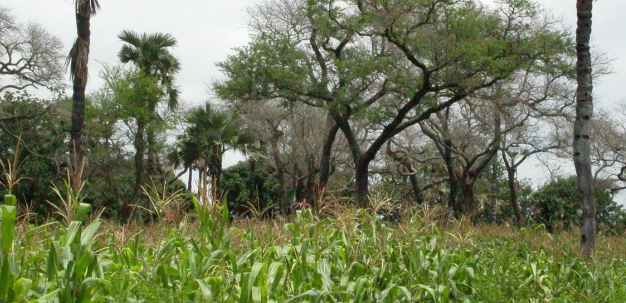
Context
Following the Rio+20 Summit in June 2012, there is an increasing global interest in SFM and focus on a green growth pathway in which sustainable utilization and conservation of forests play a major part by protecting biodiversity, ensuring water supply and mitigating climate change, as well as securing forest based livelihoods and providing necessary and desired products and services to rural and urban populations. This requires a holistic approach to the management of forest and tree resources and mobilization of both the public and private sectors to support SFM.
At the African Union Summit in Malabo in June 2014, the Heads of State directed the AU Commission (AUC), in collaboration with Ministers responsible for forests, to put in place a Framework for Sustainable Forest Management Programme in Africa (SFMP). The strategic objective of the SFMP is to enable AU Member States and the Regional Economic Communities (RECs) to sustainably manage and develop their forestry sectors for socioeconomic development and environmental protection.
Delineation and goal of AFF’s work
In this programme area, AFF, with appropriate partners, will work on increasing the knowledge and understanding on how to manage Africa’s forest and tree resources, including their dynamics, containing deforestation, increasing their quality and extent, best silvicultural practices, protection of the resources, improved seed sources and other aspects related to managing, expanding, improving and protecting the resources.
The overall goal is to facilitate the enhancement of SFM in all forest types in Africa.
Examples of issues, challenges and opportunities to be addressed
Contain loss of forest cover; e.g. through a better understanding of the drivers of such loss and how they evolve over time, and of measures and mechanisms to rehabilitate/restore degraded forest lands including ways to promote them.
Expand forest cover where appropriate; e.g. by identifying the potential, scope and investments for such expansion through plantations, woodlots, agroforestry practices, enrichment planting, FMNR, etc. in various landscapes.
Better management of forest and tree resources; e.g. by facilitating containment of invasive species, promoting forest certification as a means for achieving SFM, promoting and facilitating management of trans-boundary forest resources, strengthening supply of quality germplasm for planted forests and trees on farm, strengthening surveillance of pest and diseases within and among countries, and by facilitating improvements to tree husbandry practices.
Examples of ongoing and/or concluded AFF activities that fall under this area
- Chirwa, P.W., Larwanou, M. & G. Kowero, 2017. Forests, people and environment: some African perspectives. Southern Forests Journal of Forest Science. Vol 79.
- Gichora, M., Kojwang', H. & P. Bosu, 2017. The status and trends of forest and tree pests and diseases management in Africa. AFF Working Paper Vol. 3(3)
- Marunda, C.T., Avana-Tientcheu, M.L. & H.P. Msanga, 2017. Situational analysis of tree breeding and tree germplasm supply in Africa underpinning sustainable forest management. AFF Working Paper Vol. 3(1).
- Teketay D., Mbolo A.M.M., Kalonga S.K. & O. Ahimin, 2016. Forest certification in Africa: achievements, challenges and opportunities. AFF, Nairobi. 157 p.
- AFF, 2015. Pre-XIV World Forestry Congress Workshop on Forests, People and Environment: Some Perspectives from Africa. 4-5 September 2015 Durban, South Africa. Book of abstracts
- Lundgren, B., 2015. Forests and Trees. Their roles and opportunities in Africa’s economic development, food security and environmental health. AFF, Nairobi. 49 p.
- Chamshama, S.A.O., 2011. Forest plantations and woodlots in the Eastern and North Eastern African countries - a regional overview. AFF Working Paper Vol 1 (18).
